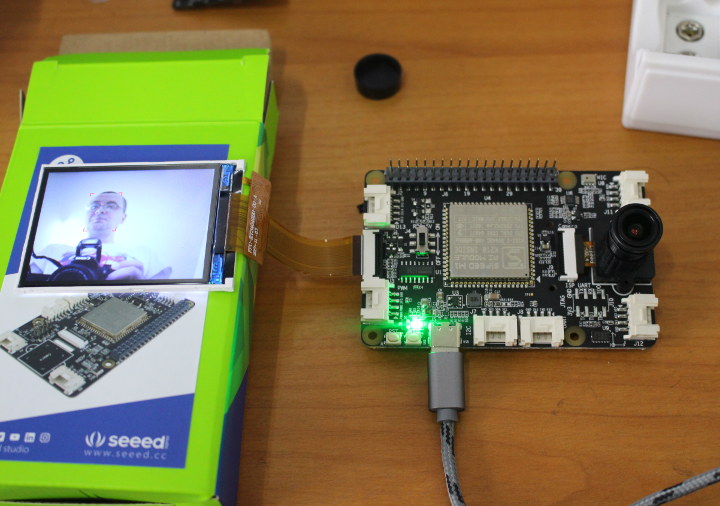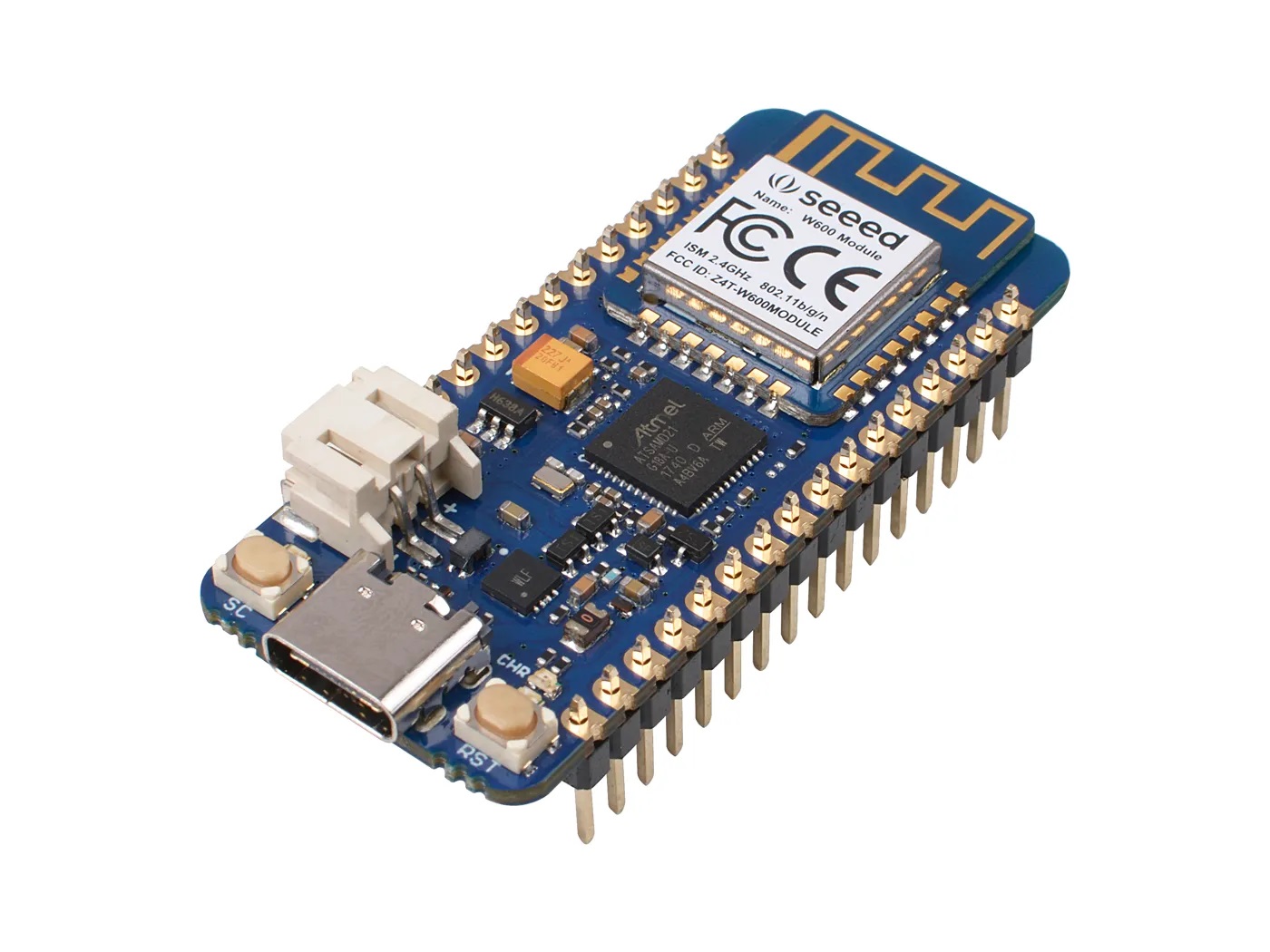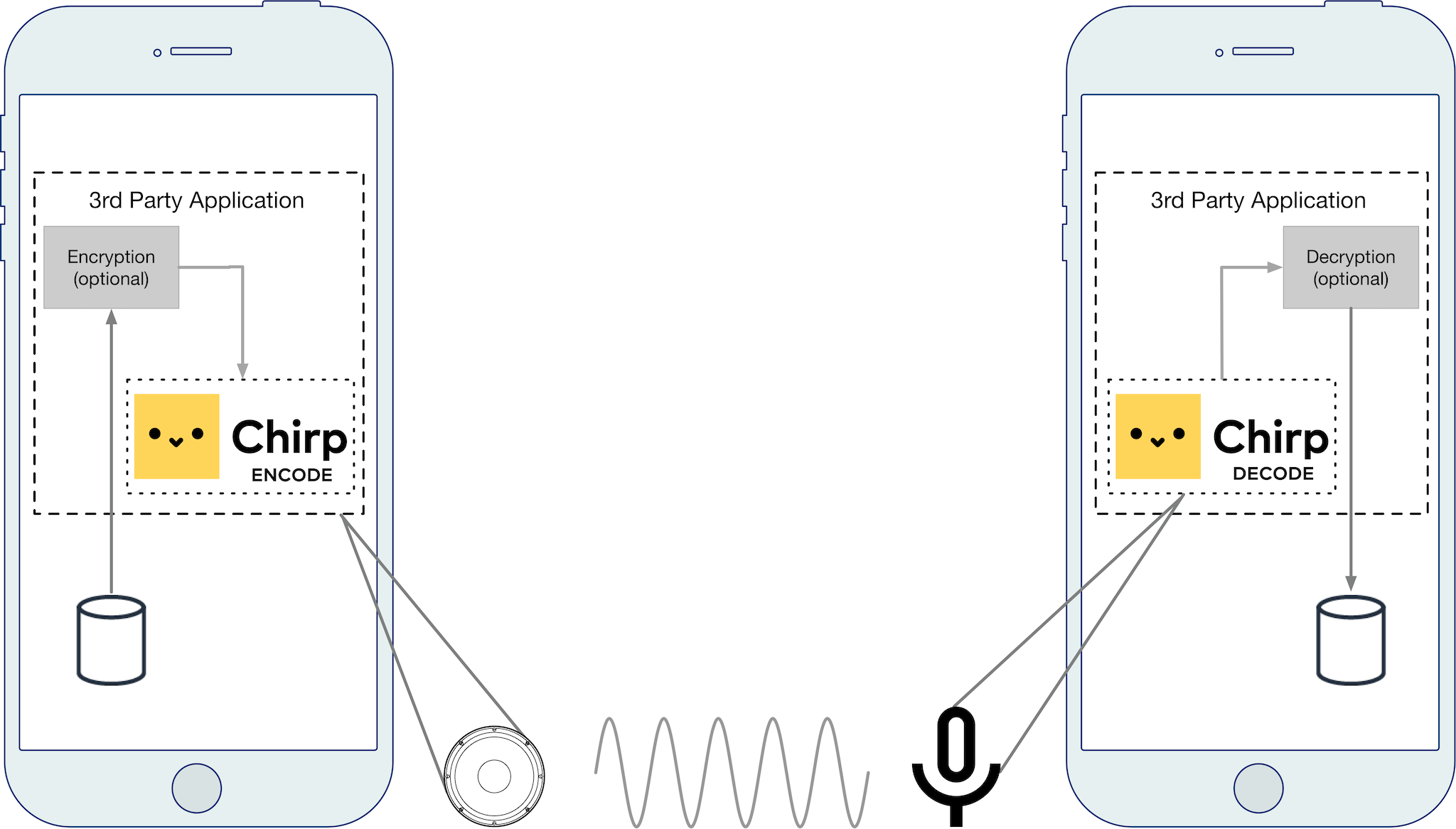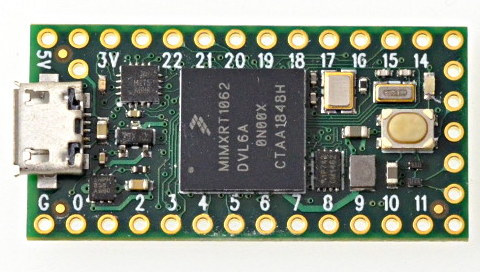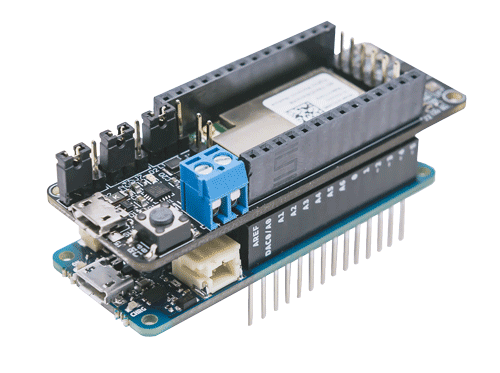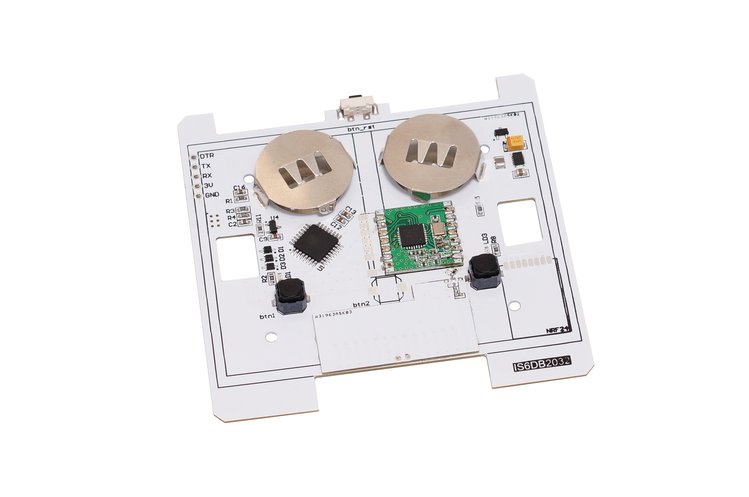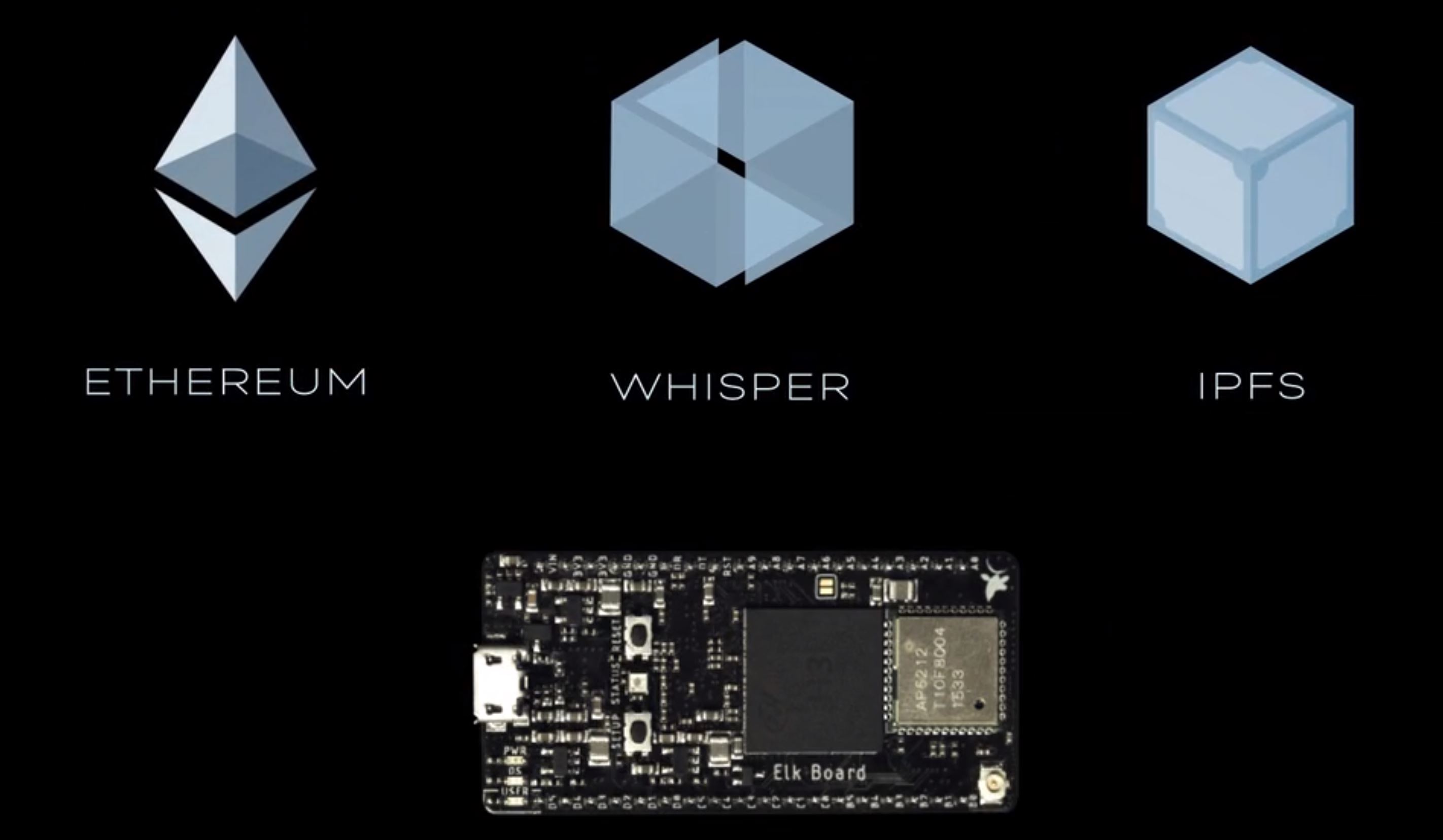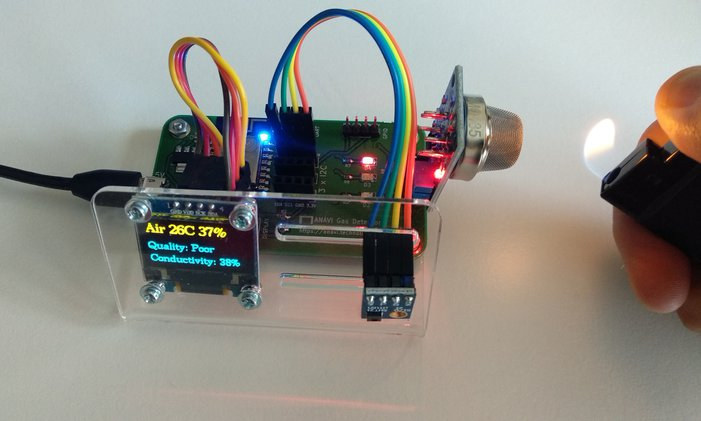Last year we discovered Kendryte K210 processor with a RISC-V core and featuring AI accelerators for machine vision and machine hearing. Soon after, Sipeed M1 module was launched with the processor for aroud $10. Then this year we started to get more convenient development board featuring Sipeed M1 module such as Maixduino or Grove AI Hat. Seeed Studio sent me the last two boards for review. So I’ll start by showing the items I received, before showing how to get started with MicroPython and Arduino code. Note that I’ll be using Ubuntu 18.04, but development in Windows is also possible. Unboxing I received two packages with a Maixduino kit, and the other “Grove AI HAT for Edge Computing”. Grove AI HAT for Edge Computing Let’s start with the second. The board is a Raspberry Pi HAT with Sipeed M1 module, a 40-pin Raspberry Pi header, 6 grove connectors, as well […]
$10 Wio Lite W600 Arduino Zero Compatible WiFi Board Follows Adafruit Feather Form Factor
Seeed Studio has just released the latest Arduino compatible Wio Lite W600 a combination of the W600 WiFi module mounted on the board and an Atmel SAM D21 Arm Cortex-M0+ microcontroller. The WiFi core is a W600 2.4 GHz module featuring the Arm Cortex-M3. The SAM D21 is the same chip used by the Arduino Zero, so the Wio Lite W600 is compatible with Arduino Zero. Basic Specs The I/O level is 3.3V, and there are 6 analog pins and 14 digital pins, as well as one UART, I2C, and ICSP port. The board is powered through a USB Type C port or a 3.5V–4.2V LiPo battery. The latest feature is the W600 module is CE/FCC certified and supports 802.11 b/g/n WiFi. The WiFi module also features 1MB on-chip flash to store and run freeRTOS operating system. Seeed Studio provides a full Arduino W600 library and demos for many wireless […]
Arduino Partners with Chirp to Enable Data-Over-Sound M2M Connectivity
Announced on August 12, 2019, Arduino has partnered with the London-based Chirp, a wireless data-over-sound software solution for machine-to-machine connectivity. The system has the ability to work online or offline, as long as there is a loudspeaker and a microphone available. The software works with the Arduino Nano 33 BLE Sense board in send and receive mode, while most Arduino MKR boards and Arduino Nano 33 IoT will also be supported by the SDK, but only to send data. The software and board are fully compatible with SDKs from a wide variety of platforms. The Nano 33 BLE Sense is available for purchase from the Arduino website, for $29.50. The sensor-rich Arduino Nano 33 BLE Sense is application-ready right out of the box, and Chirp is ready to start sending encoded data from a device fitted with an audio speaker, to the board’s built-in microphone, where it is encoded and […]
Teensy 4.0 Launched for $20 with a Much Faster NXP i.MX RT1062 Arm Cortex-M7 Processor
We last wrote about Teensy boards in 2016 for the launch of Teensy 3.5 & 3.6 boards powered by NXP Kinetis K64/K66 Arm Cortex-M4 microcontroller, and a longer form factor. Paul Stoffregen has now upped the ante with Teensy 4.0 featuring a much more powerful NXP i.MX RT1062 Cortex-M7 cross-over processor clocked at 600 MHz, and going back to the original, and more compact, form factor of earlier Teensy boards such as Teensy 3.2. Teensy 4.0 hardware specifications: SoC – NXP i.MX RT1062 Arm Cortex-M7 processor at 600 MHz with 1024KB RAM (512KB is tightly coupled), Storage – 2048KB serial flash (64KB reserved for recovery & EEPROM emulation) USB – 1x micro USB port for power and programming Expansion via through-holes and pads USB – 2x USB ports, both 480 MBit/sec Storage – 1x SDIO (4 bit) native SD Audio – 2x I2S Digital Audio, 1x S/PDIF Digital Audio Serial […]
UnaMKR Sigfox Monarch Development Kit Follows Arduino MKR Form Factor
Unabiz is an IoT network operator with offices in Singapore and Taiwan. The company offers Sigfox networks in the region, and last year unveiled UnaMKR, a Sigfox Monarch development kit compatible with the tiny Arduino MKR boards. We’ve already written about Sigfox LPWAN standard several times, but what is Sigfox Monarch exactly? Answer direct from Sigfox website: The Monarch feature makes IoT devices aware of the local radio configuration (RC) to use. A single device can thus lawfully communicate on the Sigfox network even when moving between countries with different radio regulations. That means a Sigfox Monarch compliant end-point can work legally anywhere in the world switching to 868 MHz, 902 MHz, and 920 MHz frequencies automatically depending on the country of operation. This is useful for asset tracking across countries and continents. Back to the board itself, with UnaMKR specifications: Platform – Arduino or STMicro Connectivity Lite-On WSG309S Sigfox […]
easySwitchBox is a LoRa Wall Switch Powered by Coin Cell Batteries and Arduino (Crowdfunding)
easySwitchBox is a simple actuator that does one basic thing – To send an on/off signals that can be used to control anything wirelessly. Whatever you intend on doing with the signal sent is left to you. easySwitchBox is the brainchild of easySensors, the Belarus based creators of DIY Arduino focused hardware products. easySwtichBox combines an Arduino based chip and a LoRa radio to be able to send a signal for long-range distances. On the surface, easySwitchBox looks like another wall switch you have seen around, but there is more to it. Powered by the famous Atmega 328P microcontroller, easySwitchBox is more than a wall switch, and you can reprogram it to be an intelligent one indeed or anything else you want. The power supply comes from two attached coin cell battery, making it possible to move the device around and not be confined by location or space. easySwitchBox […]
Elk, An Allwinner H3 Development board Crafted For the Decentralized Internet (Crowdfunding)
Back in 2017, Bitcoin peaked at almost $20,000; many were pretty shocked about how this supposed virtual currency suddenly become a scare resource. It also brought limelight to the technology behind it Blockchain and the idea of Decentralized internet. Although the success of the cryptocurrency didn’t last that long, as it lost about 80 percent in a year and still categorized as one of the biggest bubbles in financial history. After the crash of Bitcoin and some other similar cryptocurrencies, a lot of people predicted that’s the end of the whole Blockchain thing, and the idea of Decentralized internet will not happen. The recently announced Facebook Libra, a new cryptocurrency by the American giant Facebook, shows that Blockchain and the Decentralized web isn’t going anywhere and will probably start growing stronger. Arduino made it possible for Artist, Makers, Engineers, Students to bring ideas to life and quickly make things easier. Now, […]
ANAVI Gas Detector ESP8266 Board Monitors Air Quality, Toxic Gases (Crowdfunding)
Leon ANAVI is a software engineer with an interest in open-source hardware, and he had previously launched several ANAVI boards for home automation based on Espressif ESP8266 or for Raspberry Pi boards including ANAVI thermometer, ANAVI light controller, and ANAVI Infrared pHAT among others. Leon has now introduced a new board on Crowd Supply: ANAVI gas detector. The board is powered by ESP8266 WiSoC providing WiFI connectivity, and supports MQ gas sensor modules such as MQ-135, MQ-2, or MQ-3 in order to monitor air quality and detect gas leaks. ANAVI gas detector board specifications: Wireless Module – Based on ESP8266 Tensilica L106 32-bit processor with Wi-Fi 4 802.11 b/g/n connectivity Display – Optional Mini OLED display Gas sensor support – MQ-135 for air quality or any other 5V MQ analog gas sensor Expansion – 3x slots for I²C sensors Debugging / Programming – UART pins for flashing custom firmware Misc […]


